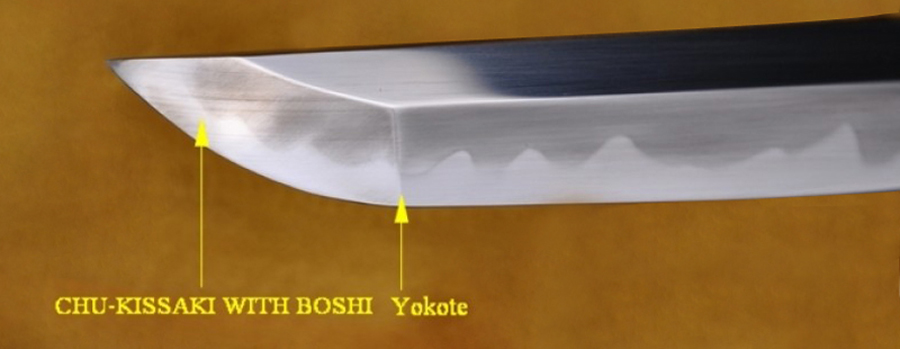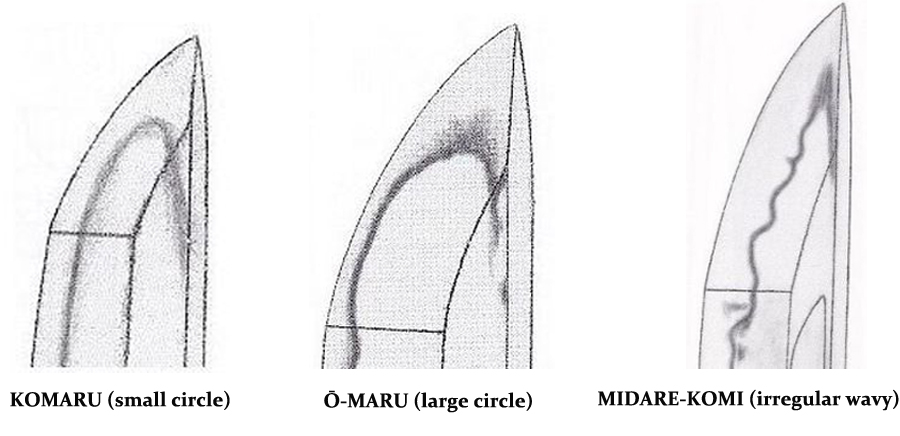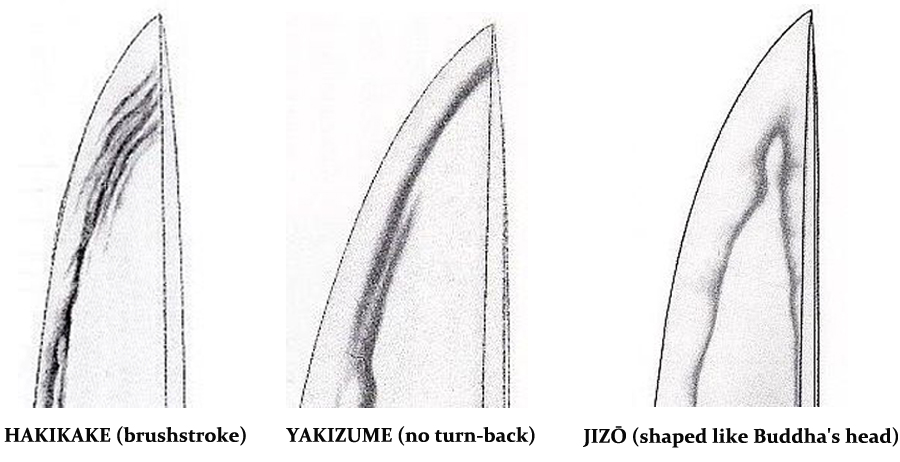Common Styles of Boshi
12 Dec


0 Comment(s)
8958 View(s)
Boshi is the hamon temper line that extends to the blade tip (kissaki) on Japanese Swords. Boshi is the hardened edge section of the tip. Swords that have not been differentially hardened do not have boshi. An ideally shaped boshi follows the rest of the hamon pattern and turns back on itself widely at the blade point, usually touching the yokote which is the dividing line where the surfaces change between the blade and the tip. These are some more common styles of boshi on the katana swords:
KOMARU (small circle): Small roundish kaeri.
Ō-MARU (large circle): Large roundish kaeri.
MIDARE-KOMI (irregular wavy): Irregular, midare-based bōshi.
HAKIKAKE (brushstroke): Main characteristic feature is hakikake. However, a bōshi with an even larger amount of hakikake is usually referred to as kaen (火炎).
YAKIZUME (no turn-back): The hamon runs out without kaeri. The yakizume itself can be sugu or midare-komi and accompanied by various hataraki.
JIZŌ (shaped like Buddha's head): A bōshi which appears more or less as midare-komi but with a sharply constricted kaeri area that makes it look like a profile of a statue of the Bodhisattva Jizō. This is particularly typical for Mino blades.
Want a unique sword? Feel free to contact us:
Phone: 086 13739276006
Email: [email protected]
Website: www.hanbonforge.com
Custom Sword Page: www.hanbonforge.com/CUSTOM-SWORDS/Custom-Your-Own-Swords
Phone: 086 13739276006
Email: [email protected]
Website: www.hanbonforge.com
Custom Sword Page: www.hanbonforge.com/CUSTOM-SWORDS/Custom-Your-Own-Swords




Leave a Comment